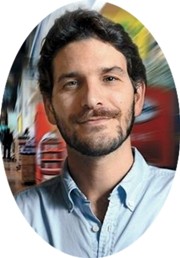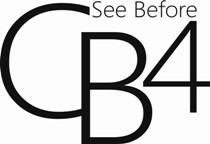|
C-B4 Analytics |
|
||
|
|
February 22, 2016 Issue |
||
|
The Most Powerful Name In Corporate News and Information |
|||
|
Fully Automated Prescriptive Analytics Software for Retailers that Allows Sales Increases without Additional Hardware Investment |
|||
|
CEO
C-B4 Analytics
Interview conducted by: Lynn Fosse, Senior Editor, CEOCFO Magazine, Published – February 22, 2016
CEOCFO: Mr. Benshaoul, what is the primary focus in your approach at C-B4 Analytics and how does it differ from others? Mr. Benshaoul: Although our offering is unique and can add value to organizations of all sizes, our focus is on making the power of predictive analytics available to organizations that don’t necessarily have the resources, knowledge, or budget to deploy such solutions. We apply patented data compression and propriety algorithms that completely automate the analytical process with increased precision and granularity. With very little IT effort, our customers can deploy a technology that in many respects is even more advanced than that of the leading global organizations.
CEOCFO: Your website indicates you get very granular and very deep into details. What do you measure and look at that less experienced people do not recognize needs to be in the mix? Mr. Benshaoul: Granularity enables our insights to be actionable. When you provide insight on a specific product at a specific store, it is significantly easier to act on it in comparison to a general trend or an aggregated insight at a category level. Typically, the problem with providing granular insight is the amount of data that has to be processed and the time and resources that have to be invested in order to spot “data gems” that can be translated into meaningful action. In addition, these granular recommendations have to add up to a significant impact on the bottom-line, otherwise we are just wasting time and resources.
By applying patented data compression algorithms, our solution can automatically detect patterns in real-time that can be translated into actionable and quantifiable recommendations. For example, our solution for retail uncovers hidden consumer behavior patterns within sales data. These patterns are then translated into operational and allocational recommendations.
CEOCFO: Would you give us an example of something that you were able to uncover that a client company were able to use and make a change? Mr. Benshaoul: One of our solutions detects in-store consumer behavior by analyzing very simple sales data. Sales data is the type of data that every retailer already has access to. This is an important point, as one of the biggest hurdles for adopting Big Data initiatives is the high barrier to entry in terms of data diversity and quality that such projects typically set. By analyzing just basic sales data, our solution uncovers in-store consumer behavioral patterns. These patterns are used as extremely accurate benchmarks for expected consumer demand at the very granular level of specific stores and SKUs. This technology allows our solution to detect operational inefficiencies that prevent products from fulfilling their sales potential and to adjust assortments at a store level to better meet local consumer preferences.
As an example, by analyzing sales data, the end product would be a recommendation which is sent to a store manager that indicates that a product is misplaced. I realize it might sound quite farfetched that we go from basic sales data to such precise insights, but this is exactly what we do.
What’s truly groundbreaking here is how quickly and efficiently we do all this. Our solution can be deployed in a single day and we conduct a POC in a couple of hours with results that are very tangible. How tangible? Our customers have experienced 0.8% to 3% same store growth applying this solution.
CEOCFO: How are you able to do it with just basic sales data? Mr. Benshaoul: That is an excellent question. If you think about it, the external and internal conditions that influence consumer behavior at stores such as promotions, climate changes etc., leave their fingerprints on the sales data. Our software extracts the patterns that these conditions impose. For example, let’s imagine a convenience store whose competitor is currently running a promotion on Diet Coke. We can expect that stores that are located near such a competitor would witness a change in the consumption patterns of Diet Coke. In this example, our solution would capture a pattern that shows distinct consumer behavior towards Diet Coke in those stores that are in close proximity to the aforementioned competitor. However, and this is the tricky part, our solution wouldn’t necessarily identify that these patterns were caused by the promotion of the competitor. But the software would reveal the shared consumer behavior pattern and use it to better understand and predict demand at a granular level.
CEOCFO: When you are talking with a prospective client, do they understand the difference? Can they grasp that what you are doing is on a different level or realize it over time as you prove it to them? Mr. Benshaoul: Not necessarily at first. However, the light typically goes on once a prospective client sees insights that were generated using his or her own data. It’s worth remembering that these patterns are not the end product of the analysis. If they were, the analysis would leave us with somewhat theoretical insight only… The output is a set of recommendations that are extracted from the patterns. These recommendations can and should be validated at the stores themselves.
However, further steps are required in order for prospective clients to evaluate the potential revenue impact our solution can have. A prospective client has to commit to deploying selected recommendations at several stores. Since we are only testing the water, we typically use emails to deliver recommendations to the stores and allocation teams rather than the app we’ve designed which many existing customers use. It is worth noting that external noise, such as promotions and seasonality, is isolated and filtered out when measuring the impact of these recommendations on sales. This filtering process gives our clients the confidence that the increase in sales was the result of the recommendations and not other external conditions.
CEOCFO: Does this involve a level of empowering local stores in a greater way than they have been or would the data be seen by a more central location that could make a change in the local store quickly? Mr. Benshaoul: That is another very good question. In a sense, in order to deploy our solution you have to empower the local stores. Although the recommendations that relate to assortment can be and should be handled centrally at HQ, the operational recommendations are assigned to store managers.
CEOCFO: Are people looking to your system because they realize it makes sense to empower the local store manager, or do they start to empower because they see the potential? Mr. Benshaoul: It varies. Some retailers want to see more involvement from their store managers and some are more wary of causing a distraction. However, as feedback starts to come back from the stores and as the impact on sales becomes visible, many of those skeptical prospects change their minds.
CEOCFO: How did you know in the beginning that this was a good approach? Where did the concept originate? Mr. Benshaoul: Like many innovations, this solution was developed by experimenting and keeping an open mind. We were a start-up based in Israel, and we had a very promising technology that was developed in one of the leading institutions in the world for predictive analytics. Our biggest challenge was to automate the process of prediction and pattern detection, while still keeping the insight granular and tangible. After developing our patented algorithms, we approached organizations and offered them a test of our unique technology and innovative solutions. One of those companies was a pharmaceutical retailer. Very quickly we realized we had something very special on our hands. Since then 25 customers have started using our solution. Some are quite large and some are retailers with dozens of stores.
CEOCFO: How are you reaching potential clients? Mr. Benshaoul: We do outbound campaigns and participate in conferences. We also try to contribute content that provides value to our potential clients. Prof Irad Ben-Gal, who is a co-founder of CB4, chairman of the company and a professor at Stanford, is a leading expert in predictive analytics and has a lot to contribute in these areas.
There is a great deal of curiosity and appetite to learn about predictive analytics. However, it’s also a crowded market, as many new vendors have been joining the space. To get noticed, a vendor has to demonstrate a practical and tangible approach that requires few resources to evaluate and can quickly demonstrate value.
CEOCFO: Are you funded for the next steps or seeking investment or partnerships? Mr. Benshaoul: We are fortunate to have Sequoia Capital as a partner. Sequoia is one of the leading venture capital firms in the world, behind mega companies such as Apple and Cisco. In the future, we will be looking to raise more capital as we look into expanding our presence and releasing more innovative solutions.
CEOCFO: Put it all together for our readers. Why choose CB4 Analytics? Mr. Benshaoul: With CB4, you are taking data that is easily accessible to you and quickly turning that data into substantial growth. With very little risk, you could be introducing truly innovative advanced analytics to your organization in a very short time. |
“With very little risk, you could be introducing truly innovative advanced analytics to your organization in a very short time.” - Yoni Benshaoul
C-B4 Analytics
|
||
|
|
|||
|
|
|||
|
Predictive Analytics, C-B4 Analytics, CEO Interviews 2016, Yoni Benshaoul, Fully Automated Prescriptive Analytics Software for Retailers that Allows Sales Increases without Additional Hardware Investment, predictions and insights through patterns, granular predictions, predictive analytics for retail, financial services, telecommunications, eCommerce companies, machine learning algorithms, prediction models at the granular level, predict anomalies, find linking patterns, affordable predictive analytics solution, granular, actionable predictive analytics, data compression algorithms, analytics that automatically detect patterns in real-time that can be translated into actionable and quantifiable recommendations, uncovers hidden consumer behavior patterns within sales data for retailers, with operational and allocational recommendations, analyze sales data, Big Data, uncover in store consumer behavior patterns, analytical solutions that detect operational inefficiencies that prevent products from fulfilling their sales potential and to adjust assortments at a store level to better meet local consumer preferences, Technology Companies, Global Company, Recent CEO Interviews, C-B4 Analytics Press Releases, News, Tech Stock, Companies looking for venture capital, Angel Investors, private companies looking for investors, technology companies seeking investors, predictive analytics companies needing investment capital |
|||
|
|
|||

 Yoni
Benshaoul
Yoni
Benshaoul